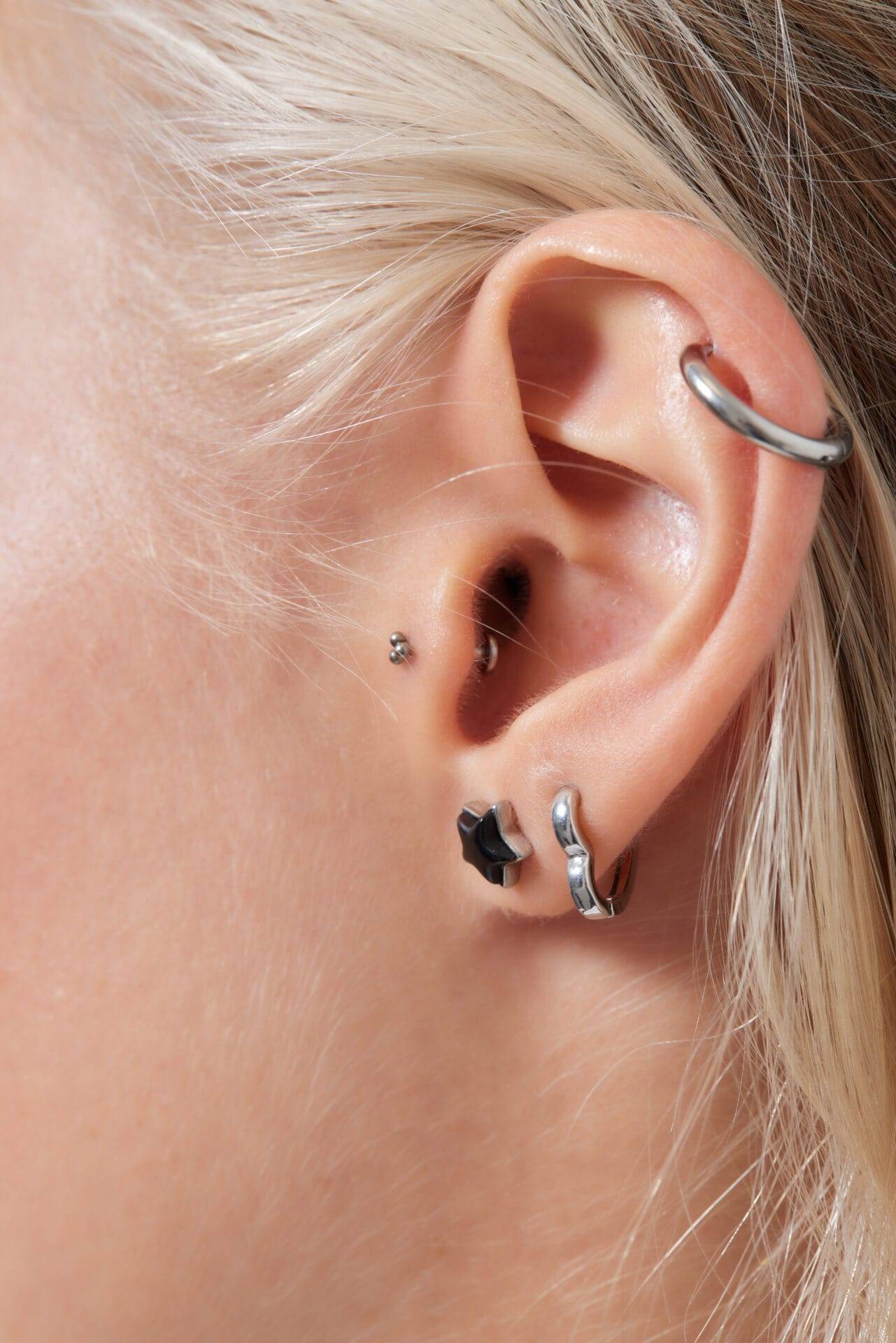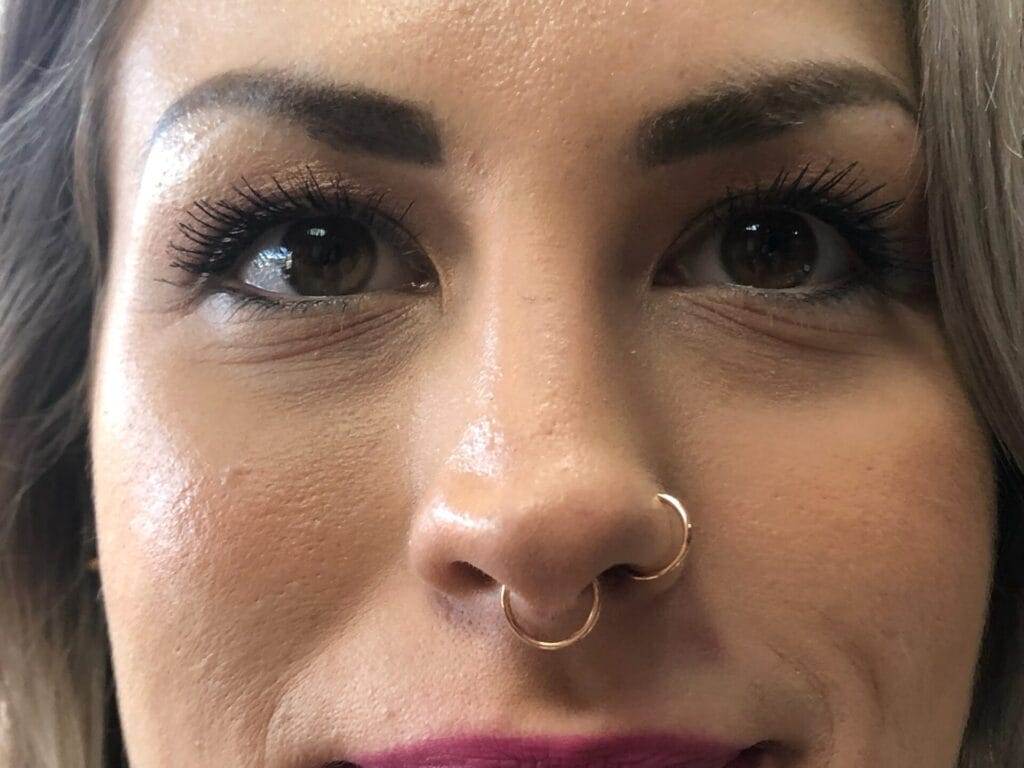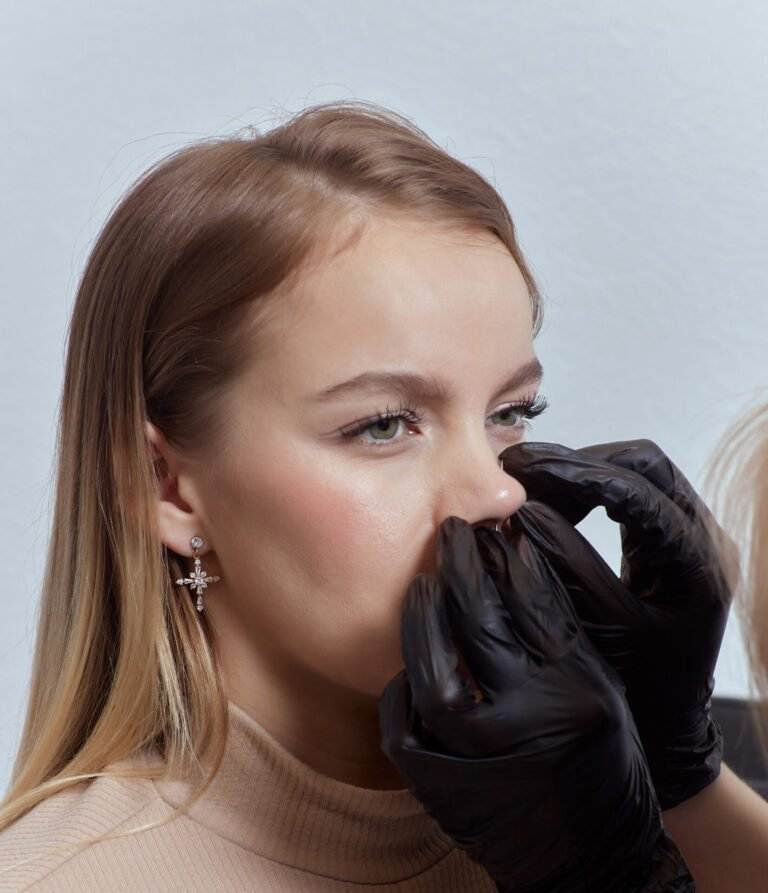Piercing is the practice of puncturing or cutting a part of the body to create an opening in which jewelry can be worn. This form of body modification has been around for centuries and has evolved into a popular form of self-expression and adornment in modern times. From earlobes to nipples and beyond, piercing has become a mainstream trend that allows individuals to showcase their unique style and personality.
The history of piercing dates back thousands of years, with evidence of piercings found in ancient civilizations such as the Egyptians, Romans, and Mayans. These cultures used piercings for various reasons, including religious rituals, cultural traditions, and as a symbol of status or beauty. In modern times, piercing has become more mainstream and is often seen as a form of self-expression and fashion statement.
Today, piercing has gained widespread popularity across different age groups and demographics. From celebrities flaunting their intricate piercings on social media to everyday individuals getting their first earlobe piercing, the art of piercing has become a common practice in many societies. With advancements in technology and techniques, the world of piercing continues to evolve, offering a wide range of options for those looking to adorn their bodies with beautiful jewelry.
The History and Cultural Significance of Piercings
Piercings have held cultural significance in various societies throughout history. In many cultures, piercings were used as a rite of passage or to signify one’s belonging to a particular group or tribe. For example, in some African tribes, lip piercings were a symbol of beauty and social status. In India, nose piercings have religious significance and are often worn by married women as a symbol of their marital status.
Religions around the world have also incorporated piercings into their practices. For instance, some Hindu devotees pierce their skin with hooks as an act of devotion during religious festivals. In Christianity, some individuals choose to get body piercings as a form of self-mortification or penance. These cultural and religious significances have contributed to the widespread acceptance and popularity of piercings in modern times.
In recent years, the evolution of piercing has seen a shift towards individual expression and personal style. While traditional piercings like earlobe piercings remain popular, more daring options such as nipple piercings, dermal piercings, and even genital piercings have gained traction among those looking to push boundaries and make a statement. The acceptance and celebration of diverse body modifications have made piercing an integral part of contemporary fashion and self-expression.
Types of Piercings: From Earlobes to Nipples and Beyond
Ear piercings are perhaps the most common type of piercing and can range from simple earlobe piercings to more intricate cartilage piercings. Earlobe piercings are typically the first choice for many individuals due to their versatility and ease of healing. Cartilage piercings, on the other hand, require more care and precision but can add a unique touch to one’s overall look.
Facial piercings have also become increasingly popular in recent years, with options such as nose piercings, eyebrow piercings, lip piercings, and even cheek piercings being embraced by those looking to make a bold statement. These facial piercings can enhance one’s features and add an edgy or glamorous touch to their appearance.
Body piercings encompass a wide range of options beyond the traditional ear and facial piercings. Navel piercings, nipple piercings, dermal piercings, and surface piercings are just a few examples of body modifications that have gained popularity in recent years. These body piercings allow individuals to adorn different parts of their bodies with unique jewelry pieces that reflect their personal style.
Genital piercings are another category that has gained popularity among those looking for intimate body modifications. Options such as Prince Albert piercings for men or clitoral hood piercings for women offer a way to enhance sexual pleasure or simply add a touch of individuality to one’s most private areas. Genital piercings require careful consideration and proper aftercare due to the sensitive nature of the area.
The Benefits of Precision Placement: Enhancing Facial Features
Piercing is not just about adding jewelry to the body; it can also be a way to enhance facial features and draw attention to certain areas. The placement of facial piercings is crucial in achieving a balanced and aesthetically pleasing look. For example, a nose piercing can accentuate the bridge of the nose or complement the shape of the nostrils, while an eyebrow piercing can highlight the arch of the brow or add symmetry to the face.
Precision placement is essential when it comes to facial piercings as it can make all the difference in how the piercing complements one’s features. A skilled piercer will take into account factors such as facial symmetry, bone structure, and skin texture when determining the best placement for a piercing. This attention to detail ensures that the piercing enhances rather than detracts from one’s natural beauty.
Facial piercings come in various styles and designs that cater to different preferences and aesthetics. For example, a septum piercing can add an edgy vibe to one’s look, while a Monroe piercing can evoke old Hollywood glamour. By choosing the right type of facial piercing and placing it strategically on the face, individuals can accentuate their best features and create a signature look that sets them apart from the crowd.
Piercing Techniques: Traditional vs. Modern Approaches

Traditional piercing techniques have been used for centuries across different cultures and societies. These techniques often involve using basic tools such as needles or sharpened objects to create openings in the skin for jewelry insertion. Traditional methods may vary depending on cultural practices and beliefs but generally focus on precision and cleanliness to minimize pain and reduce the risk of infection.
Modern piercing techniques have evolved with advancements in technology and medical knowledge. Professional piercing studios now use sterile equipment, disposable needles, and strict hygiene protocols to ensure safe and clean procedures. Modern techniques also include specialized tools like dermal punches or cannulas for specific types of piercings that require precision placement or unique jewelry styles.
Both traditional and modern piercing techniques have their pros and cons. Traditional methods may hold cultural significance or appeal to those seeking authenticity in their body modifications. However, modern techniques offer higher levels of safety, cleanliness, and precision that are essential for minimizing risks associated with piercing procedures. Ultimately, choosing between traditional or modern techniques depends on personal preference, comfort level, and desired outcome.
Choosing the Right Piercing: Factors to Consider
When considering getting a new piercing, there are several factors to take into account to ensure a positive experience and successful outcome. Personal style plays a significant role in choosing the right piercing as it should reflect one’s individuality and aesthetic preferences. Whether opting for a subtle earlobe piercing or a bold septum ring, selecting a piercing that resonates with your personal style is key.
Pain tolerance is another important factor to consider when deciding on a new piercing. Different areas of the body have varying levels of sensitivity, so it’s essential to be prepared for potential discomfort during the piercing process. Understanding your pain threshold can help you choose a location that aligns with your tolerance level while still allowing you to achieve your desired look.
Healing time is another crucial consideration when getting a new piercing. Each type of piercing comes with its own healing timeline, ranging from a few weeks for earlobe piercings to several months for cartilage or body piercings. It’s important to be patient during the healing process and follow proper aftercare instructions provided by your piercer to ensure optimal healing results.
Professional and social implications should also be taken into consideration when choosing a new piercing. Some workplaces may have strict dress codes that prohibit visible body modifications, so it’s essential to consider how your new piercing may impact your professional image. Similarly, social settings may influence your decision on where to place your new piercing based on cultural norms or personal comfort levels.
The Healing Process: Tips for Proper Aftercare
Proper aftercare is crucial for ensuring that your new piercing heals correctly without complications such as infection or rejection. The first step in caring for a new piercing is keeping it clean by gently washing it with saline solution or mild soap twice daily. Avoid touching your piercing with dirty hands or rotating jewelry excessively as this can introduce bacteria into the wound.
Tips for cleaning and caring for a new piercing include avoiding harsh chemicals or alcohol-based products that can irritate the skin or delay healing. Stick to gentle cleansers recommended by your piercer or saline solution made specifically for wound care. It’s also important to avoid swimming in pools or hot tubs during the initial healing period as exposure to bacteria can increase the risk of infection.
Common mistakes to avoid during the healing process include changing jewelry too soon before the piercing has fully healed or using improper cleaning methods that can cause irritation or scarring. It’s essential to follow your aftercare instructions diligently and seek advice from your piercer if you experience any signs of infection such as redness, swelling, or discharge from the pierced area.
By following proper aftercare guidelines provided by your piercer and being patient during the healing process, you can ensure that your new piercing heals smoothly and looks its best once fully healed.
Fashion and Piercings: How to Style Your Look
Incorporating piercings into your personal style is an exciting way to enhance your overall look and showcase your individuality. When styling your look with piercings, consider factors such as your wardrobe choices, makeup preferences, hairstyle, and overall aesthetic goals. Whether you prefer minimalist jewelry pieces or statement-making designs, there are endless ways to incorporate piercings into your fashion repertoire.
Jewelry options for different types of piercings range from simple studs and hoops to elaborate dangling earrings or captive bead rings. Experimenting with different jewelry styles can help you discover what works best for each type of piercing you have while allowing you to express your creativity through accessorizing.
Mixing and matching different types of piercings can create a unique look that reflects your personality while adding depth and dimension to your overall style. Consider combining earlobe piercings with cartilage studs or pairing facial piercings like nose rings with lip studs for an eclectic vibe that stands out from conventional fashion trends.
By exploring different jewelry options, experimenting with placement techniques, and embracing creativity in styling your look with piercings, you can elevate your fashion game while expressing yourself authentically through body adornment.
Piercing Trends: What’s Hot in the World of Body Art
In recent years, several trends have emerged in the world of body art that have influenced popular styles in piercing culture. From delicate ear stacks to bold facial adornments, these trends reflect evolving tastes in fashion while pushing boundaries in self-expression through body modifications.
Popular trends in recent years include curated ear designs featuring multiple earlobe studs paired with cartilage hoops or cuffs for an intricate yet minimalist look that emphasizes symmetry and balance across both ears.
Emerging trends like daith piercings (inner cartilage) adorned with ornate clicker rings or rook earrings (outer cartilage) embellished with gemstones offer unique options for those looking to experiment with unconventional placements while adding flair to their overall aesthetic.
The influence of social media on piercing trends cannot be understated as platforms like Instagram provide endless inspiration from influencers showcasing their latest body modifications through curated feeds dedicated solely to body artistry.
By staying informed about current trends in body artistry while exploring personal preferences in jewelry styles and placements that resonate with your individuality; you can stay ahead of the curve while embracing innovative ways to express yourself through contemporary fashion trends in body adornment.
The Risks And Safety Of Piercing: What You Need To Know
While getting pierced is generally safe when done by a professional using sterile equipment, there are potential risks associated with body modifications that individuals should be aware of before undergoing any procedure.
Potential risks include:
- Infection caused by improper aftercare practices
- Allergic reactions due to certain metals used in jewelry
- Migration or rejection where the body rejects foreign objects
- Scarring resulting from trauma or improper placement
- Nerve damage if nerves are pierced during procedures
- Keloids forming raised scars at the site
- Bloodborne diseases if equipment is not properly sterilized
To minimize risks associated with getting pierced, it’s essential to choose reputable studios staffed by experienced piercers who follow strict hygiene protocols. Additionally, following proper aftercare instructions provided by your professional will help ensure optimal healing results and reduce complications associated with new piercing procedures.
By educating yourself about potential risks associated with getting pierced, taking necessary precautions before and after procedures, you can enjoy safe and successful outcomes while expressing yourself through body artistry.

The Empowering And Transformative Nature Of Piercing
Piercing is more than just adorning one’s body with jewelry; it’s an empowering form of self-expression that allows individuals to embrace their uniqueness while celebrating their bodies.
The emotional benefits associated with getting pierced include increased confidence, self-esteem, empowerment through reclaiming ownership over one’s appearance. The transformative nature of getting pierced extends beyond physical changes, as it can also lead individuals on journeys of self-discovery, acceptance, and personal growth. Encouraging others to explore the world of body artistry, find what works best for them, and embrace their individuality through creative expression.
Whether opting for subtle earlobe studs, daring facial adornments, or intimate genital modifications, piercing offers endless possibilities for self-discovery, personal empowerment, and transformative experiences that shape one’s identity and enhance overall well-being.
In conclusion, piercing is not just about decorating one’s body; it’s about embracing who you are, expressing yourself authentically, and celebrating your uniqueness through creative self-expression. By delving into this ancient art form, exploring its cultural significance, and discovering its modern applications, individuals can unlock new dimensions of self-awareness, confidence, and personal growth through body adornment.
Whether you’re considering getting pierced for the first time or adding another piece to your collection, remember that each piece tells a story, reflects who you are, and empowers you to shine brightly in this world full of possibilities. So go ahead, embrace this transformative journey, and let your inner light shine through every piece of jewelry you wear proudly!








